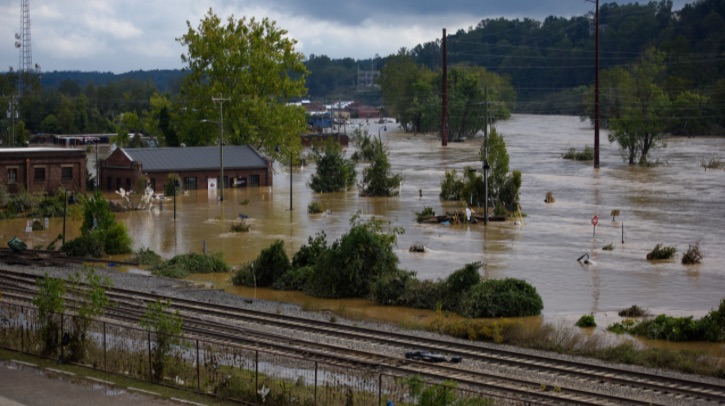The Department of Commerce and NOAA have awarded US$7.6m in funding for cooperative institutes to transform satellite observations and other data into information that communities can use to prepare for and recover from floods and heavy precipitation.
The awards will fund work to create street-level maps of potential flood and inundation, improve models of how water cycles through the nation’s rivers and streams, and develop a new dataset of hourly precipitation information to help businesses and communities better understand the effects of extreme rainfall. The resulting products are expected to be useful in monitoring the far-reaching impacts of major storms like Hurricane Helene and Hurricane Milton.
Cooperative institutes funding allocation
The Cooperative Institute for Satellite Earth System Studies (CISESS) at the University of Maryland will use its US$1.7m for flood mapping and improving satellite-derived data about land surface conditions such as soil moisture and tree cover. The enhanced land surface data will be used for climate-change research, agriculture and forest monitoring and to improve the accuracy of NOAA’s National Water Model, which simulates and forecasts how water moves throughout US rivers and streams.
The Cooperative Institute for Satellite Earth System Studies (CISESS) at North Carolina State University will get US$1.5m to use satellite- and land-based data to develop extensive climate information about flooding and precipitation. Information on the duration, frequency and size of floods will be used for monthly, seasonal and annual assessments of regional flood events that can be used by policymakers and the public. The assessments will include narratives about socioeconomic impacts on vulnerable populations, infrastructure and agriculture. A comprehensive, high-quality new dataset of hourly precipitation information will help businesses and communities better understand the effects of extreme precipitation.
The Cooperative Institute for Great Lakes Research (CIGLR) at the University of Michigan will have US$480,000 to develop a near-real-time flood mapping system driven by synthetic aperture radar (SAR) satellite data. The project will test new ways to interpret SAR data for challenging flood types, including floods in urban, sparsely vegetated and desert areas.
Finally, the Cooperative Institute for Meteorological Satellite Studies (CIMSS) at the University of Wisconsin-Madison will receive US$196,000 to test and implement flood mapping products derived from Visible Infrared Imaging Radiometer Suite (VIIRS) and SAR satellite instruments. This project will help provide detailed flood maps needed for local management during flood events and forecasting to help communities plan better for future flooding.
Extreme weather preparedness
“This major investment, made possible thanks to President Biden’s historic Bipartisan Infrastructure Law [BIL], will boost NOAA’s efforts to address the rising threat of extreme flooding caused by climate change, help communities mitigate the economic impacts from these disasters and keep families safe as we tackle the climate crisis,” said US secretary of commerce Gina Raimondo.
As part of the Bipartisan Infrastructure Law (BIL), these funds are to help communities plan for a range of climate impacts, provide tools that emergency managers can use to improve safety during floods and other weather hazards, and offer information about the impacts of extreme weather on vulnerable populations.
“By incorporating state-of-the-art science and technology into actionable guidance, we will provide communities with the tools needed to better prepare for and recover from extreme weather and climate disasters,” said NOAA administrator Rick Spinrad. “These efforts will enhance our nation’s resilience and support NOAA’s critical work to improve the data and information available for science-based decision-making.”
The US$7.6m in cooperative institute awards is part of a total US$13.8m of BIL funds provided to date for NOAA’s National Environmental Satellite, Data and Information Service (NESDIS) for flood and precipitation projects. The balance of the funding is supporting flood and precipitation projects through contracts and federal staff work. NESDIS research provides disadvantaged, underserved and socially vulnerable communities – including urban and rural areas – with equitable access to expanded products and services, and complements BIL-funded efforts managed by other parts of NOAA.
The Cooperative Institute for Earth System Research and Data Science (CIESRDS) at the University of Colorado Boulder will receive US$3.8m for management of coastal inundation and flood-related data. The project will use this information to develop products that allow communities to understand and predict environmental changes that affect coastal regions. In addition, cloud-based infrastructure will make NOAA coastal data more accessible and easier to use.
In related news, the US Department of Commerce and NOAA recently announced US$6.6m in recommended funding to establish a multi-university data assimilation consortium to improve weather forecasts using enhanced numerical weather prediction systems. Click here to read the full story.



